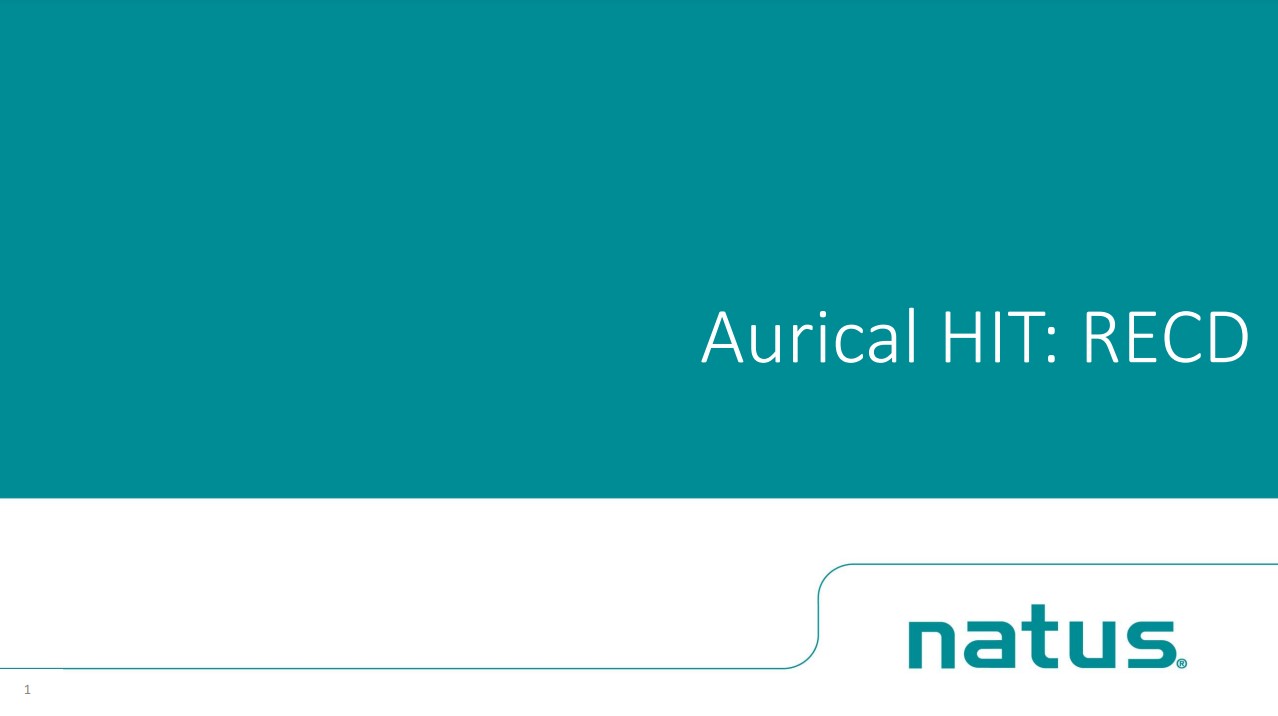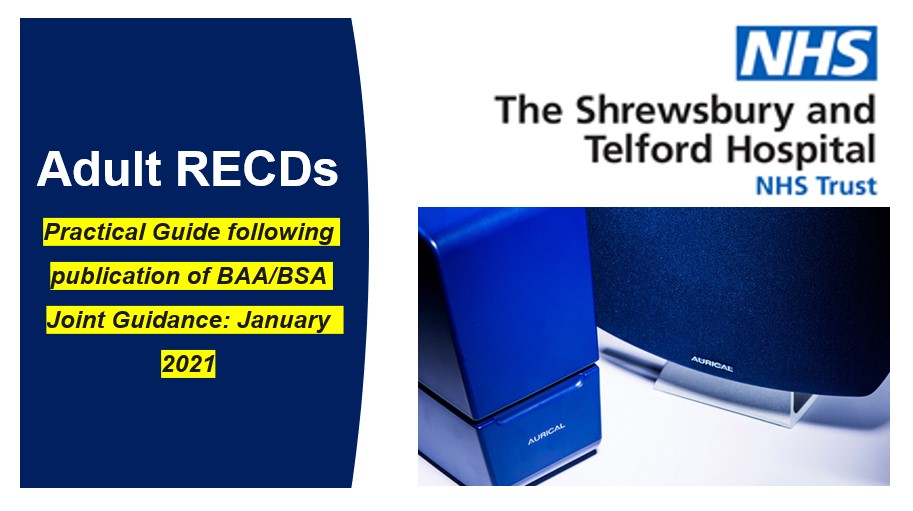Setting and verifying the frequency response of a hearing aid remotely
This document was written and published to address an urgent need during COVID to support practice during a period of restricted service delivery. It is acknowledged that the need for restricted delivery has thankfully stopped. The document was reviewed as planned in January 2023. It was decided that despite the change in context, much of the information continues to be useful as a knowledge source for reference, until relevant information can be transitioned to upcoming BSA documents. As BSA professional guidance documents are developed and updated, information from this document will be incorporated into formal recommendations and procedures. The BSA and BAA acknowledge that this document hasn’t been through the usual document development process and therefore it will only remain in place until the information is incorporated into alternative BSA or BAA guidance.
******************************************************
Setting and verifying the frequency response of a hearing aid remotely for adults during periods of restricted service delivery has been jointly produced by BAA Service Quality Committee and BSA Adult Rehab Interest Group.
This guidance focuses on the practicalities of setting and verifying the frequency response of the hearing aid entirely remotely.
This guidance has been developed to be used in conjunction with other guidance including A Guide to Remote Working in Audiology Services During Covid-19 and Beyond, May 2020, produced by Manchester Centre for Audiology and Deafness (ManCAD) and BAA Service Quality Committee, and the British Society of Audiology guidance on probe microphone measures (BSA, 2018).
Download the guidance here:
Supporting resources and videos
Information and tailored videos produced by manufacturers to support the effective use of this document:
Following the release of this Remote Guidance, a Practice Guide presentation has been prepared by Perindi Patel at Shropshire NHS Audiology Services. Perindi has kindly allowed this to be shared with fellow audiologists. Open presentation slides:
Or download PDF: Adult RECD Process pdf
Please also scroll down for information and videos kindly tailored to support the ‘remote fitting guidance’ by verification equipment manufacturers.
Tips on verifying hearing aids with a <3mm vent using a HA1 coupler:
Attaching a thin tube BTE to a HA1 coupler (Interacoustics). This is a photo of a RIC but technique is the same as for a thin tube BTE
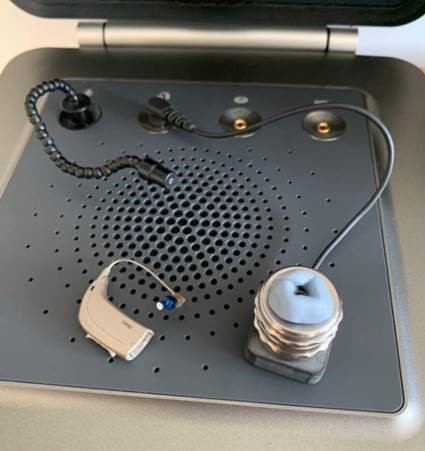
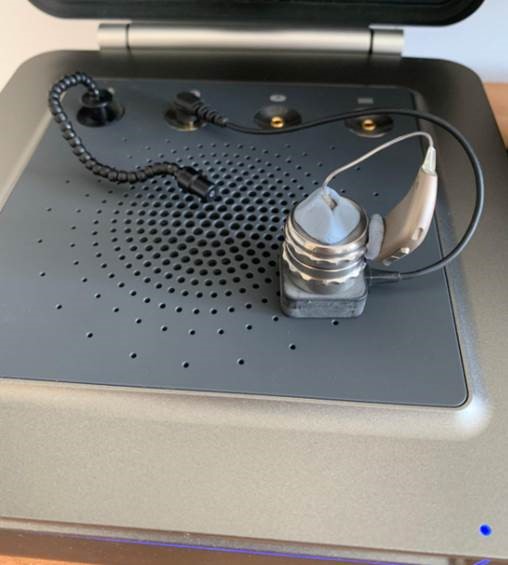
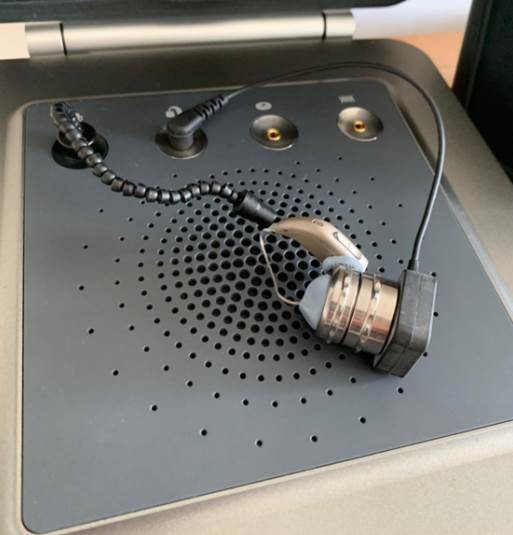
For the thin tube also add putty midway along the tube to reduce tube resonance
Departments will likely be more familiar with measuring RECD’s with an occluded mould and HA2, largely because of its use in paediatric audiology (see page 12). However for adult ears, particularly when considering a remote fitting pathway, there are reasons why the document focuses on the use of a HA1 for both RECD measures and subsequent coupler verification :
- The use of the HA1 more accurately accounts for the acoustics of the individual earmould and tube/thin tube during the fitting.
- A well fitted earmould is unlikely to be available at the assessment appointment. Therefore an insert tip would be used for the on-ear RECD measurement. Use of the HA2 for the subsequent coupler verification will cause a mismatch and introduce error
- If a clinician/service wants to use a well-fitting earmould for the on-ear RECD and a HA2 for the coupler RECD measurement and subsequent coupler verification, they should be aware the longer tube lengths associated with adult earmoulds will be more prone to high frequency RECD variation (page 12).
The HA1 method is gold standard for an adult RECD and verification due (see document). However, it’s understood that coupling a mould/thin tube to a HA1 can be more difficult than coupling via a HA2 method. Here are a few tips to support a stable, repeatable frequency response when using a HA1 during coupler verification.
- Make sure that the aperture of the thin tube (generally suggested to remove the dome) or earmould/ITE is held flush against the aperture of the HA1 adaptor via the putty. So that you are not changing the volume of the coupler
- Similarly make sure the putty does not push into the cavity but stays flush
- Use enough putty (possibly golf ball size) to hold the tube/mould in place
- Make sure the acoustic putty is creating a tight fitting seal around the thin tube to avoid acoustic leakage
- Align the microphones along the loudspeaker axis (this will vary depending on manufacturer) and the reference microphone is as close as possible to the front microphone of the hearing instrument, without touching.
- Use putty to help hold the hearing aid in the correct place and make sure the hearing aid remains in the desired place when you shut the test box
- The tubing length should be cut to the appropriate length (as measured and estimated at the assessment), so that the acoustics of the appropriate tube length is accounted for during verification
Remember to add a small piece of putty to a thin tube during verification, to act as a dampener (as though against the head in situ) and avoid additional resonance.
If you are a manufacturer’s representative or audiologist/service who has produced similar material tailored to this document that might support the effective use of Remote Fitting Guidance, please contact admin@baaudiology.org

